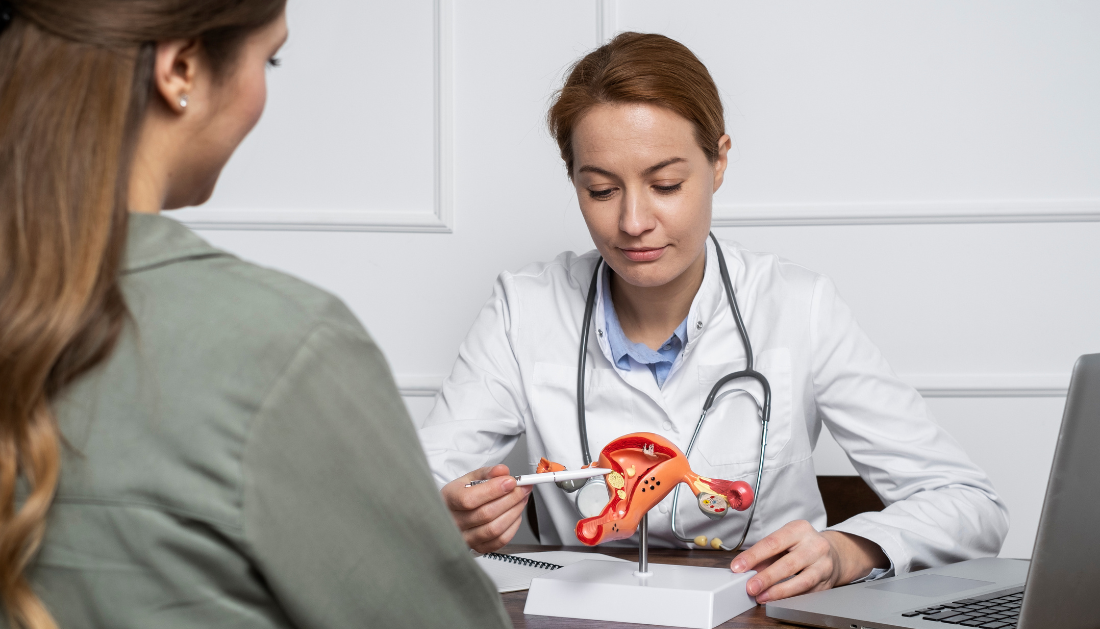

Researchers created biocompatible, stimuli-responsive hydrogel implants for reversible fallopian tube occlusion, which can be used to provide contraception and avoid endometriosis (the growth of uterine-like tissue outside the uterus). Their work was recently published in Advanced Materials.
Context
In the United States (U.S.), tubal ligation is a popular method of contraception because fallopian tubes are necessary for conception. However, over 10% of women regret the procedure because of difficulties or a desire to have children.
Reconnection is difficult and not always successful. Options such as the Essure device have encountered problems. Stimuli-responsive hydrogels have the ability to prevent endometriosis and give effective contraception by preventing retrograde menstruation, which is the passage of menstrual blood backward into the pelvic cavity. To increase their reversibility, safety, and efficacy, more research is required.
About the study
All chemicals were purchased from Sigma-Aldrich, with the exception of Formalin (ROTIHistofix 4%, ROTH) and Poly(ethylene glycol) di-photodegradable acrylate (PEGdiPDA) crosslinker. After being created, PEGdiPDA was kept in the dark.
The hydrogel was prepared by injecting pure N-(2-hydroxyethyl) acrylamide (NHEA) and poly(ethylene glycol) diacrylate (PEGdiacrylate) into Teflon tubes, polymerizing them, and then drying them. We either used fresh fallopian tubes straight out of SBZ Schlachtbetrieb Zürich AG or kept them refrigerated at -20 °C. Materials for cell culture and endometrial cells (12Z) were obtained from Applied Biological Materials Inc. (Abm).
The pH of the prepared simulated oviduct fluid (SOF) was adjusted to 7.2. Gels made from hydrogel master mixes including particular monomers and crosslinkers were kept and subsequently analyzed for swelling in SOF.
The investigation methods included Fourier-transform infrared spectra and scanning electron microscopy (SEM), and the gel stability was examined in human peritoneal fluid. Viscoelastic characteristics and degradation kinetics were evaluated by rheological studies.
Using a hysteroscope, a 3D-printed replica of the uterus mimicked the insertion of gel. The gel cytotoxicity was evaluated by means of a lactate dehydrogenase (LDH) assay on normal human dermal fibroblast (NHDF) cells. Piglets were used in in vivo feasibility trials, using hydrogel implantation and 21-day observation.
The efficiency of hydrogel occlusion in fallopian tubes was assessed using burst pressure testing. Glutathione solutions and light were used to destroy photolabile and thiol-degradable gels, respectively.
Hydrogel obstruction was measured by histological analysis and tests using endometrial cells and boar semen to simulate retrograde menstruation. After statistical analysis, the data were shown as mean ± standard deviation.
In conclusion
In summary, this work suggested the use of polymer materials with triggerable, on-demand degradation for reversible swelling-mediated fallopian tube closure as a mechanical alternative to hormone-based contraception and a means of halting the migration of endometrial cells.
The stimuli-responsive hydrogels showed little cytotoxicity, low stiffness, full occlusion under physiological pressures, and good swelling and viscoelastic characteristics.
In a piglet model, histological examination of obstructed fallopian tubes revealed little damage, suggesting a low risk of fibrosis. Using photolabile or thiol-degradable crosslinks, degradation was accomplished.
The hydrogels demonstrated firm contact with fallopian tubes without causing any harm, and they inhibited the transit of endometrial cells. These materials present a viable therapy option for endometriosis and a reversible contraception.
For more information: Reversible Mechanical Contraception and Endometriosis Treatment Using Stimuli-Responsive Hydrogels, Advanced Materials, https://onlinelibrary.wiley.com/doi/10.1002/adma.202310301
more recommended stories
 Safer Allogeneic Stem Cell Transplants with Treg Therapy
Safer Allogeneic Stem Cell Transplants with Treg TherapyA new preclinical study from the.
 AI in Emergency Medicine and Clinician Decision Accuracy
AI in Emergency Medicine and Clinician Decision AccuracyEmergency teams rely on rapid, accurate.
 Innovative AI Boosts Epilepsy Seizure Prediction by 44%
Innovative AI Boosts Epilepsy Seizure Prediction by 44%Transforming Seizure Prediction in Epilepsy Seizure.
 Hypnosis Boosts NIV Tolerance in Respiratory Failure
Hypnosis Boosts NIV Tolerance in Respiratory FailureA New Approach: Hypnosis Improves NIV.
 Bee-Sting Microneedle Patch for Painless Drug Delivery
Bee-Sting Microneedle Patch for Painless Drug DeliveryMicroneedle Patch: A Pain-Free Alternative for.
 AI Reshapes Anticoagulation in Atrial Fibrillation Care
AI Reshapes Anticoagulation in Atrial Fibrillation CareUnderstanding the Challenge of Atrial Fibrillation.
 Hemoglobin as Brain Antioxidant in Neurodegenerative Disease
Hemoglobin as Brain Antioxidant in Neurodegenerative DiseaseUncovering the Brain’s Own Defense Against.
 Global Data Resource for Progressive MS Research (Multiple Sclerosis)
Global Data Resource for Progressive MS Research (Multiple Sclerosis)The International Progressive MS Alliance has.
 AI Diabetes Risk Detection: Early T2D Prediction
AI Diabetes Risk Detection: Early T2D PredictionA new frontier in early diabetes.
 Cancer Cells Learn to Self-Report: A New Frontier in Immunotherapy
Cancer Cells Learn to Self-Report: A New Frontier in ImmunotherapyHow a Drug Complex Enables Immune.

Leave a Comment